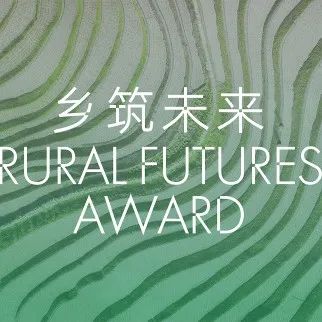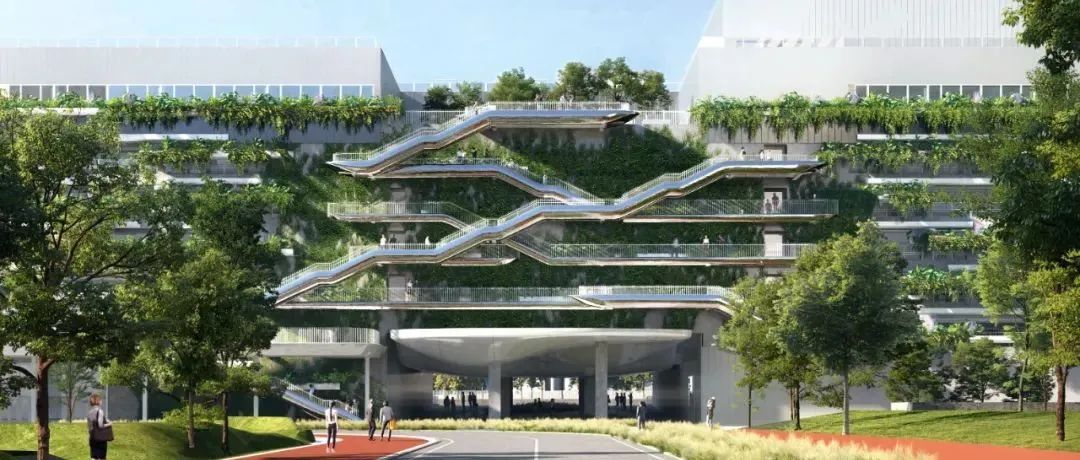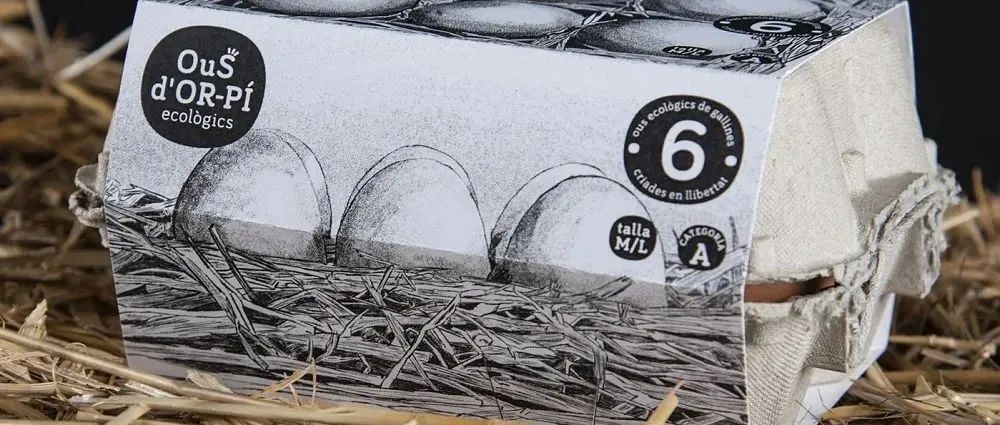The first edition of Design Shenzhen debuts on 1-4 December 2022 at Shenzhen Convention & Exhibition Center. The event collaborates the Chinese young architect community APT (Architecture Practice Talks) to launch China’s first architectural practice award for sustainable rural construction — Rural Futures Award, designed to recognize the architectural practice in rural construction field with deep exploration of the value of sustainability, and to form a positive value guide for a sustainable rural revitalization.
The "Rural Futures Award" adopts a combination of nomination and self-submission. Architectural practices that have been completed and implemented in rural areas of China can participate in the registration, which are not limited to professional architects, since the award focuses more on practice itself rather than professional threshold. The award is open for entries from 20th October to 15th November 2022, and the final presentation and award ceremony will be held on the 1st of December at Design Shenzhen.
01 Awards Introduction
In the third decade of the 21st century, China's urban renewal has increasingly become a key vocabulary of construction, but at the same time, the rural construction has also become an equally important parallel track. The "Countryside, The Future" themed exhibition, curated by Rem Koolhaas in early 2020, opened at the Guggenheim Museum in New York, exploring environmental, political and socioeconomic changes in rural areas in a global context. As the central issue of the exhibition says, our current urban lifestyle makes the "countryside" an organized, abstract and automated revolution on an unprecedented scale.
In such a wave of rural construction with "cities surrounding the countryside", China's rural construction presents a very different development state with its cultural diversity and regional complexity, and the demand and challenges are also different. In 2021, the No.1 document of the central government also put forward the highest instructions of accelerating agricultural modernization and vigorously implementing rural construction actions, which gave further policy guidance and support for the construction of a modern rural industrial system and the improvement of rural infrastructure construction and service supply.
In the wave of construction, the figure of architects is particularly active. with their design wisdom, a large number of architects "go up to the mountains and down to the countryside", incarnated as the "think tank" of rural construction movement. In this movement, we also see the active participation of non-archietcts such as artists and craftsmen. Rural construction’s small volume and the cost constraints has generated a lot of folk wisdom and "wild design", which also makes rural architecture presents a mixture wonder of being both local and foreign.
This mixture wonder maybe is a kind of inevitable primary state, which driven by urban construction inertia imposing on rural areas, or we can call it a young state of rural construction. This young state is an exciting stimulus, it has both "fearless" exploration and high risk. We want to put the “urban ability” in the countryside while at the same time being afraid of that the urban experience would destroy the rural ecology. Such a state of groping in the chaos makes it impossible for the current rural construction to take the high speed development mode, but the "small fire and slow stew" mode, requiring more patience and persistence.
Rural areas need evolvement, but not alienation. What we build together should really belong to the countryside, rather than the “urban countryside”. In the rural construction, it has gradually become a key issue to explore a sustainable working concept, and form a healthy and long-term interaction mechanism with the rural development. How to use local materials and techniques to adapt to local conditions to achieve a sustainable rural environment? How to create rich use scenarios for rural life with space as the carrier, and realize the sustainability of rural vitality? How to build a balance between local ecology and foreign mode in the rural society, and realize the sustainability of rural evolution? These problems have become the subjects that every rural builder needs to face.
Under this background, the Chinese young architect community APT (Architecture Practice Talks) joint Design Shenzhen which is one of Asia's largest and influential design events, have launched China’s first architectural practice award for sustainable rural construction, designed to recognize the architectural practice in rural construction field with deep exploration of the value of sustainability, and to form a positive value guide for a sustainable rural revitalization.
The "Rural Futures Award" adopts a combination of nomination and self-submission. Architectural practices that have been completed and implemented in rural areas of China can participate in the registration, which are not limited to professional architects, since the award focuses more on practice itself rather than professional threshold.
02 Awards Ideology
The "Rural Futures Award" is established in the global context of rural development, and based on China's local rural construction, actively respond to the national rural revitalization strategy, deeply explore how to intervene in rural ecology, promote the activation of rural revitalization, in order to help formulating the positive value guidance for China's rural construction practice in the future.
The establishment of the award focuses on "sustainability", which not only refers to encourage sustainable material application and construction methods from the technical level, but also refers to the construction projects that inject the sustainable vitality to the countryside, and also refers to the sustainable work mode that deeply involved in rural development. The "Rural Futures Award" does not set professional boundaries, any individuals in the practice of rural construction can be included in the scope of evaluation. This blurred boundary is in line with the local, spontaneous and anonymous nature of rural construction, and is also the joint construction value worth being encouraged and amplified.
03 Awards Category
The "Rural Futures Award" consists of three categories: Construction Award, Reactivation Award and Symbiosis Award:
1. Construction Award
recognizes the projects which actively adopt the way of local construction, reduce the environmental load and resource loss caused by rural construction, and creatively excavate, use and translate local materials and construction "gene", help the inheritance and protection of rural construction wisdom.
A total of 3 finalists, including 1 final winner, with a prize money of 20,000 RMB, and 2 finalists, with a prize money of 3,000 RMB each.
2. Reactivation Award
recognizes the projects that create spaces as the functional carrier really needed by the countryside, and realize the long-term vitality in the actual operation process, providing a catalyst for the continuous activation for the rural daily life and long-term development of the countryside.
A total of 3 finalists, including 1 final winner, the prize money of 30,000 RMB, and 2 finalists,with a prize money of 3,000 RMB each.
3. Symbiosis Award
recognizes the architects who have in-depth exploration in rural construction practice and insights on a healthy and sustainable rural construction mode, actively participate in the construction of long-term operation mechanism, and devote continuous work to the field of rural development. The award aims to encourage deeper observation to explore the underlying logic of local rural development, deeply integrate their own architectural practices into rural construction, and form a long-term symbiotic think-tank model and practice mechanism.
A total of 3 finalists, including 1 final winner, with a prize money of 40,000 RMB, and 2 finalists, with a prize money of 3,000 RMB each.
In addition, all nominated and final winners have the opportunity to be directly recommended and entrusted to participate in the relevant rural revitalization construction projects in Shengze Town, Wujiang, Suzhou, the sponsor of the first “Rural Futures Award”.
04 Judges
*Sort by last name
Huang Yinwu
Director of Jianchuan Shaxi Center for Rural Cooperation; Associate Professor of Shanghai Jiao Tong University School of Design; Honorary Associate Professor of The University of Hong Kong Faculty of Architecture
Li Honggu
Chief Editor of Sanlian Lifeweek Magazine
General Manager of Sanlian Lifeweek Media Co., Ltd
Liu Daizong
Director of the China Sustainable Cities Program of the World Resources Institute
Liu Yuyang
Founder and Principal of Atelier Liu Yuyang Architects
Meng Fanhao
Co-Founder & Chief Architect of Line+Architects
Qu Yan
Contemporary Artist / Curator; Director of the Institute of Urban and Rural Art Construction, Guangdong University of Technology
Rong Yao
Founder of Shanghai Yunhe Dragon Architectural Design Co., Ltd.; Chief designer of Yunhe Dragon Forest School
Zhao Yang
Founder and Principal of Zhao Yang Architects; Design Instructor of Tsinghua University School of Architecture
Zuo Jing
Curator; Village builder;
Chief editor of Bishan Magazine
05 Qualifications
1. There are no restrictions on the qualification of the participating architects / firms. Non-professional architects can also participate in the award evaluation, and there is no limit to their location or nationality.
2. The works of the participating architects should be completed in rural areas of China.
Note: the definition of "rural area", according to the article 2, paragraph 2 of《The Promotion Law of the People's Republic of China on Rural Revitalization》 which implemented in 2021,“rural” refers to the regional complex outside of the urban area including villages and towns, which has the natural, social and economic characteristics and production, living, ecology, culture and other multiple functions.
06 Timeline
October 20, 2022:
Award registration starts.
November 4, 2022:
Award press conference and forum.
November 15, 2022:
Deadline for entry submission.
November 20, 2022:
Announcement of the final list.
December 1, 2022:
Final presentation and award ceremony.
07 Registration
Scan the QR Code below, or click on Read More at the end of the article to get the application information form.
You can also copy the following link and extract code to the browser to get the application information form.
Link
https://pan.baidu.com/s/1ZW1pYWfl1V9IdcYY6do12g?pwd=xzwl
Extract Code
xzwl
Please send the application form and the required materials as a package to the organizing committee at info@aptalks.org, with the subject line of the email as "Rural Futures Award - Award Category - Applicant".
In order to encourage and support the participation of more outstanding rural builders to the greatest extent, this award adopts the form of open application. The same applicant or work can apply for all categories of awards at the same time, and there is no registration fee for the application.
The deadline for application is 23:59 on November 15, 2022 (GMT+8). The organizing committee will notify the finalist applicants by email or telephone on November 20.
Q & A: All questions need to be sent by email to the designated email address info@aptalks.org, with the subject of the email being “Rural Futures Question”.
Organizer
Organizer丨Design Shenzhen, APT
Supporter丨People's Government of Shengze Town, Wujiang, Suzhou
Planner丨Farm+
分享动态 ▾
点亮“设计上海”公众号”星标“与”在看“标志,
随时把握前沿行业与峰会资讯。
欢迎”分享”、“点赞”传递设计理念,分享设计动态!
本文来自微信公众号“设计上海”(ID:DesignShowShanghai)。大作社经授权转载,该文观点仅代表作者本人,大作社平台仅提供信息存储空间服务。












